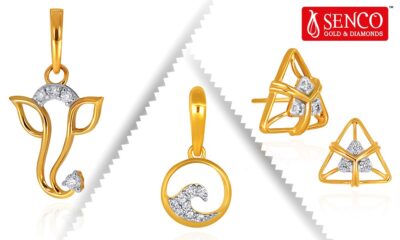International News
Richemont Outperforms Forecasts as Jewellery Division Drives Growth
Strong demand for Cartier and Van Cleef & Arpels boosts Richemont’s quarterly sales, offsetting weakness in watch segment.

Richemont, the Swiss luxury group behind Cartier and Van Cleef & Arpels, exceeded market expectations with a 7% rise in quarterly sales, driven by continued strength in its jewellery division. As global demand for high-end fashion softens, affluent consumers are still investing in fine jewellery—helping Richemont outperform many of its luxury peers.
For the fourth quarter ending in March, jewellery sales surged 11% year-on-year, more than compensating for an 11% decline in the group’s watch division, which has been affected by reduced luxury spending in China amid ongoing economic uncertainty and a slowing property market.
Overall, Richemont reported sales of €5.17 billion ($5.80 billion) for the quarter, a 7% increase in constant currency terms, surpassing the 6% rise forecast in a Visible Alpha consensus cited by HSBC.
According to JPMorgan analysts, Richemont’s strong jewellery performance highlights a strategic shift toward “the higher quality, more profitable and less cyclical part of the business.” This repositioning has helped the company remain resilient during a broader luxury sector slowdown.
Shares of Richemont rose 5% in early trading on Friday in response to the results.

Jewellery now represents the lion’s share of Richemont’s business, accounting for 54% of total sales—up from 36% in 2019—signaling the group’s successful pivot toward this high-margin category. “Richemont continued to gain significant market share in jewellery,” noted Jean-Philippe Bertschy, analyst at Vontobel, who praised the division’s “spectacular growth and profitability,” particularly when compared with luxury rival LVMH, owner of Bulgari and Tiffany & Co.
Still, analysts caution that Richemont is not immune to the global volatility affecting luxury demand, though its core clientele and focus on fine jewellery position it more defensively than brands reliant on fashion sales.

International News
Gold continues upward march;Bank of America forecasts $5,000/oz for 2026

Gold prices in India saw a modest rise on Wednesday today Oct 15, mirroring an uptick in international markets as renewed US-China trade tensions and expectations of further US interest rate cuts bolstered demand for safe-haven assets.24k gold traded at Rs.1,28,360/10gm after gaining ₹10 in early trade, while silver prices increased by Rs.100 to Rs.1,89,100 per kilogram.
Gold prices surged to a record high of $4,179.48 per ounce on October 14, 2025. Investors flocked to safe-haven metals amid trade tensions and Fed rate-cut expectations. U.S. December gold futures jumped 57% year-to-date. Bank of America raised its 2026 gold forecast to $5,000 per ounce, warning of possible near-term corrections.
Gold prices soared to an unprecedented $4,179.48 per ounce on October 14, 2025, marking a historic milestone for the yellow metal. The rally comes as investors worldwide seek safety in hard assets amid a turbulent global economic backdrop marked by escalating trade tensions, slowing growth, and expectations of further interest rate cuts by the U.S. Federal Reserve.
The sharp surge in bullion prices has been driven by a combination of macroeconomic uncertainty and aggressive monetary easing. As inflation pressures remain sticky and central banks pivot toward dovish policies, gold has reasserted its role as a hedge against both currency debasement and market volatility.
In futures trading, U.S. December gold contracts have skyrocketed nearly 57% so far this year, underscoring the strength of investor demand across both institutional and retail segments. Analysts note that central bank buying—particularly from emerging markets—has added further momentum to the rally, with several countries diversifying reserves away from the U.S. dollar.
Reflecting this bullish sentiment, Bank of America has raised its 2026 gold price forecast to $5,000 per ounce, citing continued monetary easing, geopolitical instability, and robust central bank accumulation. However, the bank also cautioned that short-term corrections are likely, given the rapid pace of the recent run-up and potential bouts of profit-taking.
Overall, gold’s meteoric rise underscores a broader shift toward safe-haven assets, as investors navigate a world increasingly defined by economic fragmentation, shifting interest rate cycles, and persistent geopolitical risks.
-

 National News4 hours ago
National News4 hours agoSenco Gold & Diamonds launches affordable 9k gold jewellery starting under ₹7,000, a Game-changer amid fluctuating gold prices this Dhanteras
-

 BrandBuzz4 hours ago
BrandBuzz4 hours agoMavitrra Launches “The Amara Collection” – A Timeless Celebration of Bridal Grandeur and Festive Luxury
-

 Education5 hours ago
Education5 hours agoIndian jewellery trade and industry expectations & trends
-

 GlamBuzz8 hours ago
GlamBuzz8 hours agoDazzling Divas and Star Power: Inside Manish Malhotra’s Grand Diwali Celebration




